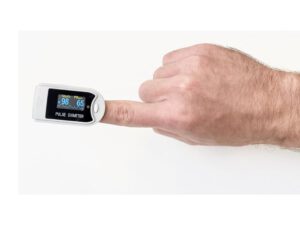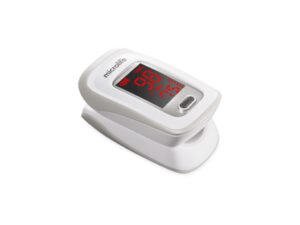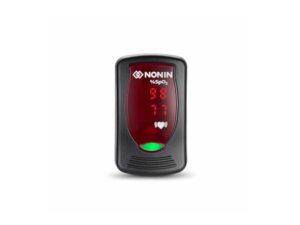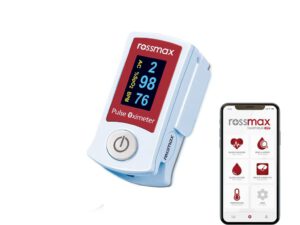Many people are not aware of it arterial calcification, despite the serious consequences it can have, including heart attacks or cerebral infarctions. As people age, the understanding and awareness of arterial calcification increasingly crucial.
What is arteriosclerosis?
Arterial calcificationArteriosclerosis, also known as atherosclerosis, is a disease that narrows the arteries and can lead to complete occlusion of these blood vessels. This disease is caused by an inflammatory process in the blood vessels, in which the artery walls are slowly damaged.
At birth, our arteries have a fairly smooth inner wall. But as we age, these walls undergo damage and wear. This damage leads to the accumulation of white blood cells and fatty substances such as cholesterol in the arterial wall. This results in the formation of a plaque – a local thickening of the vessel wall.
The thickening, along with the buildup of calcium, restricts the flow of blood through the artery. Over time, this thickening can grow and eventually completely occlude the artery.
Measuring arterial calcification
Although arterial calcification is typically measured in hospitals, pulse oximeters are now also available for home use, such as the Rossmax SB210 saturation meter. Equipped with Artery Check Technology (ACT), this meter can assess the degree of arterial narrowing and provide an indication from 1 to 6 to show its severity. The Rossmax SA300 Professional Pulse Oximeter, often used by doctors, is another device that accurately measures the degree of arterial calcification measure.
Measuring blood pressure can also give a good indication of the possibility of high blood pressure arterial calcification. While not 100% accurate, measuring pulse pressure is a valuable indicator. A high pulse pressure may indicate arterial calcification.
Differences in arteriosclerosis between men and women
It is important to note that there are differences between men and women when it comes to arterial calcification. In women, the calcification is often more extensive and is more likely to be in smaller blood vessels, while in men, plaques are more likely to develop in larger branches of an artery.
In addition, the composition of the plaques in women is different. They are more stable, which means fewer cracks form in the plaque. However, the amount of plaque in men is greater than in women. It is also important to mention that female hormones, especially oestrogens, protect the vascular wall until menopause. After menopause, however, the vessel wall becomes more vulnerable.
The symptoms of arteriosclerosis
When discussing arterial calcification, it is important to understand that the arteriosclerosis symptoms are not always immediately visible. In fact, one of the most challenging aspects of this condition is that it often develops 'silently', with no obvious signs or symptoms until the disease has progressed significantly.
In the early stages, symptoms can be subtle and easily attributed to other health conditions or simply the aging process. This makes regular monitoring and preventive measures all the more important.
Some of the possible symptoms of arterial calcification include:
- Tiredness or weakness, especially with physical activity
- Shortness of breath
- Pain or discomfort in parts of the body that don't get enough blood, such as the chest, legs, lower back, or hips
- Headache, dizziness, or confusion, which may indicate problems in the cerebral arteries
- High blood pressure or changes in kidney function, which may indicate problems in the renal arteries
- In later stages of the disease, when the arteries are significantly narrowed or blocked, the symptoms can be much more severe and may represent a medical emergency. These include:
- Chest pain (angina pectoris), which occurs when the blood supply to the heart muscle is insufficient
- A heart attack, which occurs when the blood supply to the heart muscle is completely blocked
- A stroke or 'mini-stroke' (transient ischemic attack), which can occur when the blood supply to the brain is disrupted
It is important to emphasize that the presence of one or more of these symptoms does not necessarily mean that a person has arterial calcification has. They can be signs of other health problems and should therefore always be taken seriously and monitored by a health professional. If you are concerned about possible symptoms of arteriosclerosis, talk to your doctor.
Age and arteriosclerosis
Arterial calcification age is an important factor to consider in understanding this disease. As we age, the risk of arteriosclerosis increases. Although arteriosclerosis can start in younger people, the symptoms are often not noticeable until old age.
At birth, our arteries are smooth and elastic, but as we age they can become damaged and stiffen, a process known as arteriosclerosis. These changes are the basis for arteriosclerosis, which allows plaques to build up and narrow and harden the arteries.
In addition, lifelong eating habits and other behaviors that lead to high cholesterol levels and high blood pressure can contribute to the development of arteriosclerosis over time.
It is important to note that while age is an unchanging risk factor, there are still many things individuals can do to reduce their risk of arteriosclerosis, even as they age. This includes eating a healthy diet, being physically active on a regular basis, not smoking, and managing medical conditions such as high blood pressure and diabetes.
Including regular medical checkups, especially from middle age onwards, is also crucial. These can aid in the early detection of arteriosclerosis symptoms, allowing timely and effective arteriosclerosis treatment can be deployed.
Source: Hartichting.nl
Personal and expert advice on saturation meters
We offer various oximeters in our range that can measure arteriosclerosis. For personal and expert advice, please do not hesitate to contact us 0182 – 239393 or by email at info@bloodpressuremonitor.shop.
Interesting topics related to arteriosclerosis












